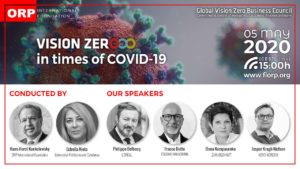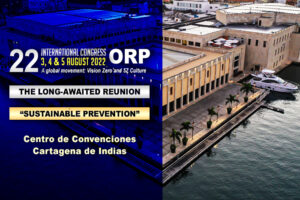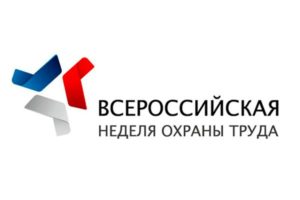More than 4,500 people attended the online sessions of the Japan 2022 Vision Zero Summit
The event, which was held online from May 11 to 13, was attended by leading international agencies and institutions involved in occupational safety and health, such as IGSAP, ILO, WHO, ISSA, IOSH, FIOH, IOHA, FIOH and FIORP
From May 11th to 13th, the Japan 2022 Vision Zero Summit took place under the chairmanship of the Japan National Institute of Occupational Safety and Health (JNIOSH). This online event was streamed to more than 4,500 people per day during the three days of the congress. This was the second Vision Zero Summit to date since 2017 when the seven golden rules approach for the proactive promotion of a culture of prevention in the workplace were established.
The event was attended by 215 leading speakers from all five continents, representing 43 countries. The conference was co-organized by agencies and institutions of global influence related to occupational health and safety, such as the Institute of Global Safety Promotion (IGSAP), the National Institute of Advanced Industrial Science and Technology (AIST), the Global Coalition for Safety and Health at Work, the World Health Organization (WHO), the International Social Security Association (ISSA), the International Occupational Hygiene Association (IOHA), the Finnish Institute of Occupational Health (FIOH), the Institution of Occupational Safety and Health (IOSH) and the International ORP Foundation (FIORP).
Moving from vision to reality
The summit worked on several lines of intervention in a challenging global context where each year 2.8 million deaths are caused by work-related health accidents. Another alarming figure is that 4% of the world’s GDP is lost due to unsafe working conditions. Globalisation, the fourth industrial revolution, emerging health risks at work especially related to mental health and wellbeing, and the impact of the COVID-19 pandemic require innovative approaches all of which were discussed during the Japan 2022 Vision Zero Summit. This was done through:
- Vision Zero implementation in companies from vision to reality addressing the corporate mindset.
- Proactive indicators for Vision Zero.
- Standardization and accreditation systems in preventive culture.
- Building a preventive and inclusive culture.
- Digitalisation, artificial intelligence and data science in prevention.
- The role of companies in the health and safety of supply chains.
- Safety in transport, including self-driving vehicles.
- Improving productivity and Occupational Health and Safety in the construction sector.
- The effect of the Covid-19 pandemic on health and hygiene habits on both an individual and global scale.
- The future of business management through healthy leadership.
- The human factor in a healthy and safe society.
- Robotics in collaborative safety.
- Safety, health and well-being in the industrial sector.
- Well-being and the Sustainable Development Goals.
- The promotion of preventive culture and continuing education with particular attention to e-learning.
- Occupational health and safety in the agricultural sector.
- Government strategies for the promotion of Vision Zero.
Tokyo Declaration
The Japan 2022 Vision Zero Summit concluded with an appeal from the co-organizing agencies and institutes, highlighting the request of Hans-Horst Konkolewsky, President of FIORP, who emphasized the need and importance for organizational improvement in order to achieve objectives in a timely manner.
Finally, the chairman of the organizing committee, Toshihiro Fujita, presented the ‘Tokyo Declaration‘, an eleven-point manifesto designed as a roadmap for Vision Zero. It is targeted at governments, international organisations, trade unions, employers’ associations, social security institutes, companies and universities to adhere to the seven golden rules that make up Vision Zero. The aim is to implement them in their OHS management systems, risk assessment strategies and supply chain management.




